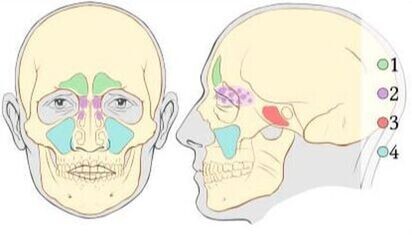Patients often present for osteopathy treatment who experience sinus congestion, face discomfort, nasal sensitivity, headaches, post-nasal drip or are prone to chronic sinus infections. When treating patients with sinus conditions, as osteopaths we must consider the function of the sinuses and what role they play in relation to the rest of the body.Sinuses are hollow cavities in our skull. There are 4 paranasal sinuses which drain directly into the nasal cavity. The paranasal sinuses have been highlighted in the image below.
Frontal sinus
Ethmoid sinus
Sphenoid sinus
Maxillary sinus
There is a lot that osteopaths can do to help sinus conditions regardless of how long you have been experiencing the symptoms for! After treatment patients often report feeling lighter, less congested through the face and able to breathe better.
Osteopathic treatment for sinuses addresses the whole respiratory system. An osteopathic treatment will aim to:
Improve the functional drainage from the paranasal sinuses to the nasal cavity
Address imbalances through the face, neck, chest and thorax
Facilitate good breathing mechanics
Normal function of the cranial bones allows the paranasal sinuses to drain freely into the nasal cavity. When the sinuses are blocked by inflammation, a mass or excess fluids, drainage of mucous can be interrupted. Stagnant mucosal fluids can become a hotbed for infection which can contribute to symptoms of pain, discomfort, breathing difficulties and even diminished hearing!
Osteopaths are trained to diagnose and treat imbalances and restrictions throughout the head, neck and chest that may be contributing to sinus symptoms. Techniques often include a range of gentle hands on osteopathic techniques and will vary for each individual presentation
Research has shown that there is great variation in the nasal cavity and sinus pathways between individuals. Due to natural anatomical variation some of us are more prone to sinus conditions than others. Anatomical variations can influence how out sinuses drain whether it is due to narrow nasal pathways or a mechanical restriction between two or more bones. Factors contributing to disrupted drainage pathways may be congenital (since birth) or traumatic (such as a neck or head injury).
An osteopathic treatment will diagnose your unique condition and look to address the underlying anatomical cause.
Sinus infection is most often viral rather than bacterial. Symptoms of a viral sinus infection do not require antibiotics and can ease on their own. Alongside osteopathic treatment, there are a few things you can do at home to help:
Rest and slowing down
Drinking plenty of fluids
Elevating your head with an extra pillow when lying down
Steam
Humming
Irrigation techniques (neti pot)
Indications for a bacterial sinus infection include fever, tenderness of the face and changes in the colour of mucosa.
Whether it's a long term thing, or fluctuating seasonal symptoms, osteopathy can help relieve your sinus symptoms by addressing the underlying cause contributing to your unique condition.
Bibliography
Cappello, Z. and Dublin, A. StatPearls [Internet]. StatPearls Publishing; Treasure Island (FL): January 2020. Anatomy, Head and Neck, Nose Paranasal Sinuses
Lafci Fahrioglu S, Andaloro C. StatPearls [Internet]. StatPearls Publishing; Treasure Island (FL): Nov 14, 2018. Anatomy, Head and Neck, Sinus Function and Development.
Gach P, Tuchtan-Torrents L, Delteil C, Adalian P, Piercecchi MD, Ebert LC, Gorincour G. Virtual reconstruction of paranasal sinuses from CT data: A feasibility study for forensic application. Diagn Interv Imaging. 2019 Mar;100(3):163-168.
Mahmood HT, Shaikh A, Fida M. Reliability and validity of maxillary and sphenoid Sinus morphological variations in the assessment of Skeletal maturity. J Ayub Med Coll Abbottabad. 2018 Jul-Sep;30(3):360-365.
Villarreal R, Wrobel BB, Macias-Valle LF, Davis GE, Prihoda TJ, Luong AU, McMains KC, Weitzel EK, Yao WC, Brunworth J, Clark DW, Nair S, Valdés CJ, Halderman A, Jang DW, Sivasubramaniam R, Zhang Z, Chen PG. International assessment of inter- and intrarater reliability of the International Frontal Sinus Anatomy Classification system. Int Forum Allergy Rhinol. 2019 Jan;9(1):39-45
Weitzberg E, Lundberg J. American Journal of Respiratory and Critical Care Medicine; 2002. Humming Greatly Increases Nasal Nitric Oxide. Vol 166(2), pp.144-145



